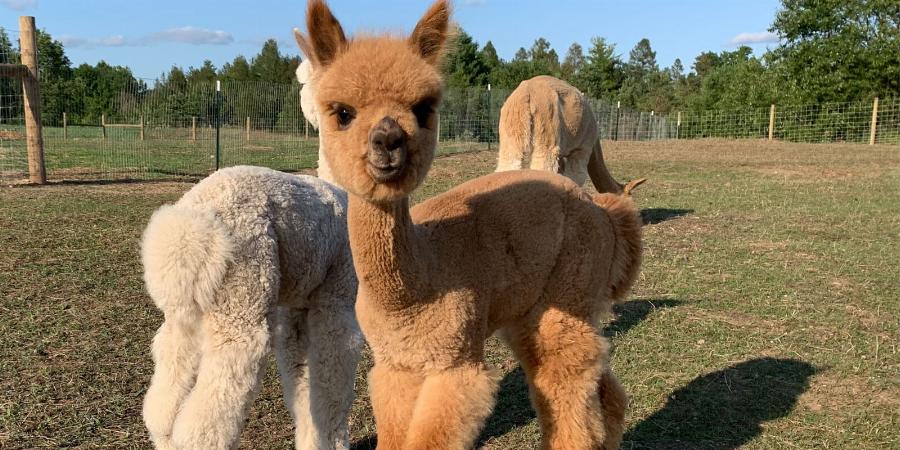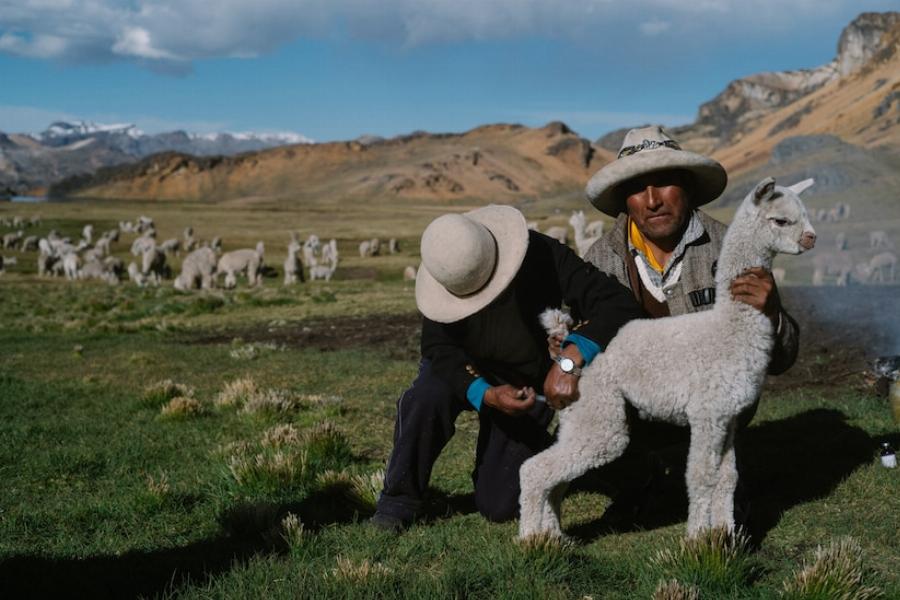Nội dung bài viết
- Origin and Significance of Alpacas: Where Did These Fluffy Creatures Come From?
- Types of Alpacas and Their Unique Genetic Characteristics: Suri vs. Huacaya – Spotting the Difference
- Alpaca Care and Husbandry: Ensuring Their Genetic Potential Thrives
- The Alpaca Industry and Its Unique Genetic Influence: From Fleece to Fashion
- Interesting Facts and Myths about Alpacas: Unveiling the Truth Behind the Fluff
- How do Alpacas adapt to high altitude environments?
- Why is Alpaca fleece considered hypoallergenic?
- What are the different natural colors of Alpaca fleece?
- Conclusion: Celebrating the Marvel of Alpaca Genetics
Alpacas, those charming camelids of the Andes Mountains, boast a fascinating array of unique genetic characteristics. These characteristics not only contribute to their adorable appearance and luxurious fleece but also play a crucial role in their adaptability to harsh high-altitude environments. Ever wondered what makes alpacas so special? Let’s delve into the captivating world of alpaca genetics and uncover the secrets behind their remarkable traits.
Origin and Significance of Alpacas: Where Did These Fluffy Creatures Come From?
Alpacas originated in South America, specifically the Andes Mountains of Peru, Bolivia, Chile, and Ecuador. Their wild ancestor, the Vicuña, still roams these high-altitude plains. For thousands of years, indigenous communities have valued alpacas for their fleece, which is softer, warmer, and more durable than sheep’s wool. Today, alpacas are treasured worldwide, not just for their valuable fiber but also as gentle and intelligent companions.
Types of Alpacas and Their Unique Genetic Characteristics: Suri vs. Huacaya – Spotting the Difference
There are two main types of alpacas, categorized by their unique genetic characteristics that influence their fleece: Suri and Huacaya. Identifying them is pretty straightforward once you know what to look for. Huacaya alpacas, the more common type, have a dense, crimped fleece that gives them a fluffy, teddy-bear-like appearance. Suri alpacas, on the other hand, possess long, silky fibers that hang down in lustrous locks, resembling dreadlocks. This difference in fleece texture is due to variations in their unique genetic characteristics controlling fiber structure. Imagine a fluffy cotton ball next to a flowing silk scarf – that’s the simplest way to visualize the difference between Huacaya and Suri fleece!
 Comparing Suri and Huacaya Alpaca Fleece Types
Comparing Suri and Huacaya Alpaca Fleece Types
Alpaca Care and Husbandry: Ensuring Their Genetic Potential Thrives
Understanding Alpacas Unique Genetic Characteristics also informs their care. Proper nutrition, shelter, and veterinary care are essential for maintaining their health and well-being. Alpacas are relatively low-maintenance animals, but specific considerations are necessary due to their unique genetic adaptations to high altitudes. Their digestive system is highly efficient, allowing them to thrive on relatively sparse vegetation. Regular shearing is crucial, especially for Suris, to prevent overheating and maintain fleece quality. Ever considered owning an alpaca? Researching their specific needs is a must!
The Alpaca Industry and Its Unique Genetic Influence: From Fleece to Fashion
The alpaca industry relies heavily on the unique genetic characteristics of these animals. Alpaca fleece is highly prized for its softness, warmth, hypoallergenic properties, and durability. It comes in a wide array of natural colors, from white and beige to brown and black, further adding to its value. The unique genetic characteristics of different alpaca breeds also influence the specific properties of their fleece, such as fiber diameter and crimp. This diversity caters to various textile applications, from high-end fashion garments to cozy blankets and accessories.
 Diverse Range of Alpaca Products Showcasing Unique Fleece Characteristics
Diverse Range of Alpaca Products Showcasing Unique Fleece Characteristics
Interesting Facts and Myths about Alpacas: Unveiling the Truth Behind the Fluff
Alpacas are often confused with llamas, but these animals have distinct genetic differences. Llamas are larger and have coarser fleece. One interesting fact about alpacas is their communal behavior; they are highly social animals and thrive in herds. They also have a unique method of communication, using a variety of vocalizations, body postures, and even a soft humming sound. Dispelling common misconceptions, alpacas are generally gentle and docile, although they can occasionally spit when feeling threatened. Ever heard that alpacas are difficult to handle? Think again!
How do Alpacas adapt to high altitude environments?
Alpacas have evolved unique genetic adaptations to thrive in high-altitude environments, including specialized red blood cells that efficiently carry oxygen in thin air.
Why is Alpaca fleece considered hypoallergenic?
Alpaca fleece lacks lanolin, the oily substance found in sheep’s wool, making it hypoallergenic and suitable for people with sensitive skin.
What are the different natural colors of Alpaca fleece?
Alpaca fleece comes in a stunning array of over 22 natural colors, ranging from pristine white to deep black, and many shades of brown, grey, and fawn in between.
 Alpaca Herds Thriving in High-Altitude Andean Landscapes
Alpaca Herds Thriving in High-Altitude Andean Landscapes
Conclusion: Celebrating the Marvel of Alpaca Genetics
Alpacas unique genetic characteristics are not just a scientific curiosity; they are the foundation of these animals’ remarkable adaptability, valuable fleece, and endearing personalities. From the rugged Andes Mountains to farms and homes around the world, alpacas continue to fascinate and delight us. Exploring their unique genetic makeup provides a deeper appreciation for these incredible creatures and their contribution to our lives. So, the next time you encounter an alpaca, take a moment to marvel at the intricate genetic tapestry that makes them so special. Share your alpaca experiences and continue learning about these amazing animals! Let’s celebrate the marvel of alpacas unique genetic characteristics together!